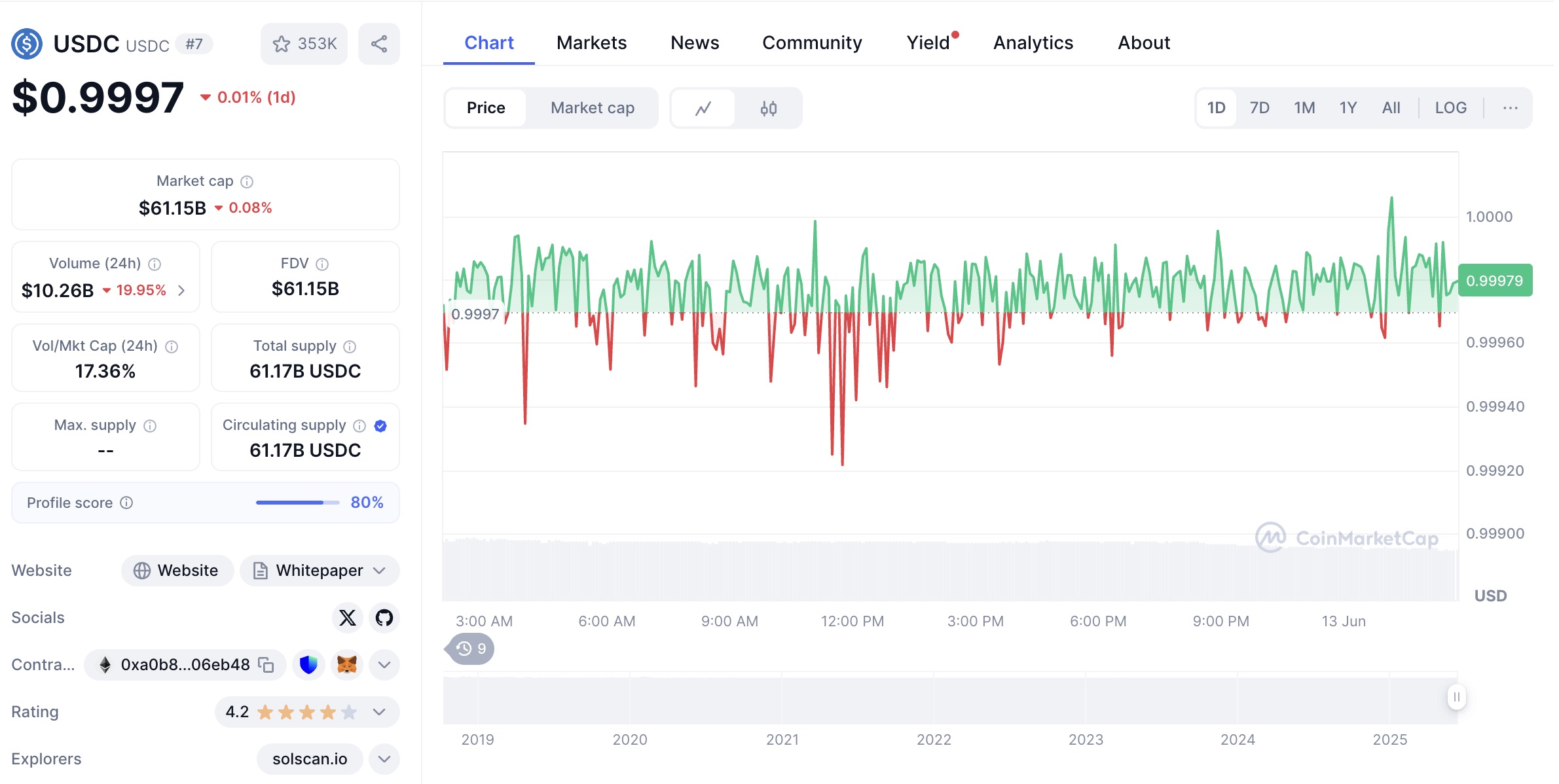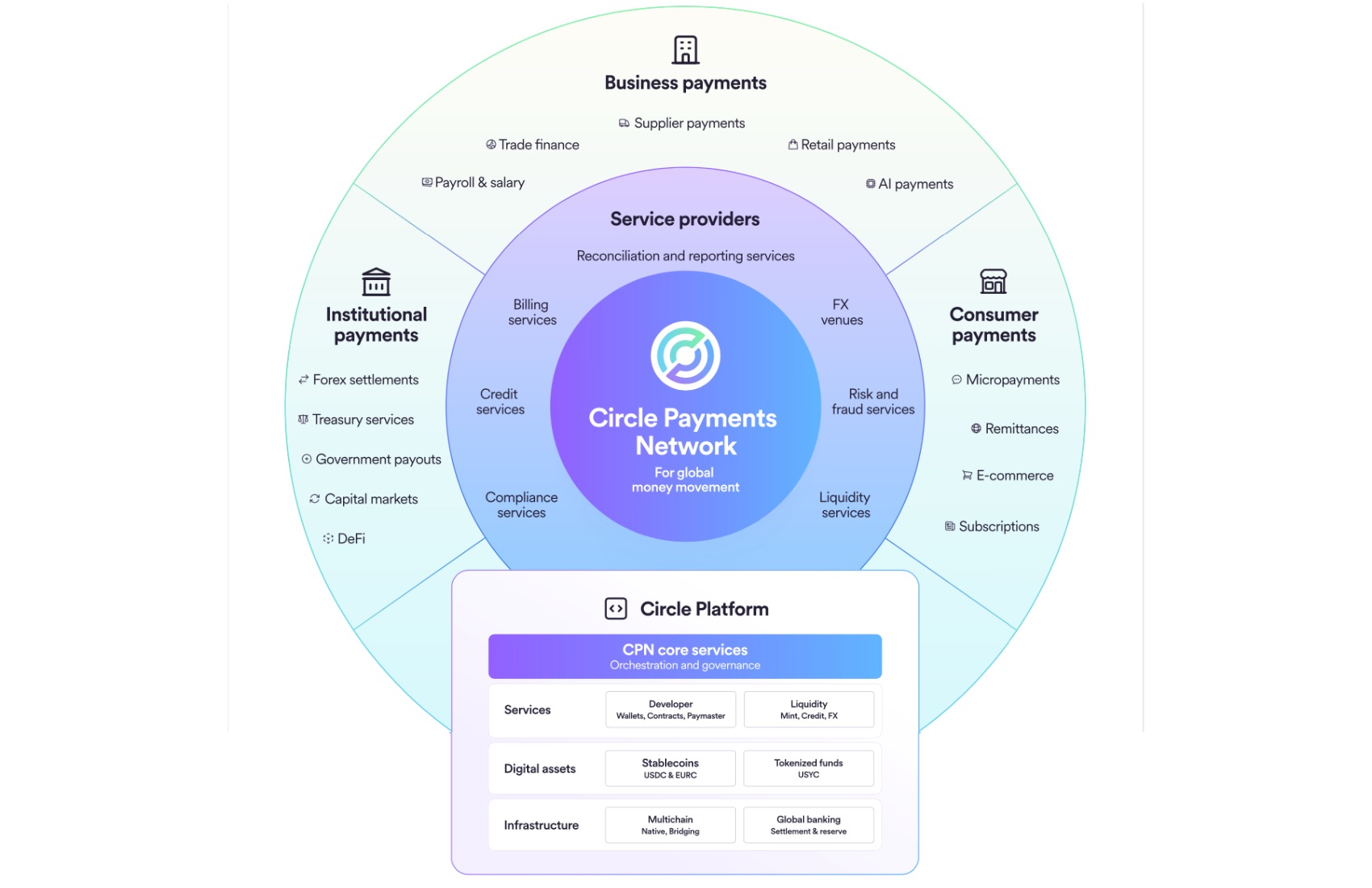Why Wall Street is Betting Big on Circle
Remember when sending money abroad meant high fees and days of waiting? Circle is a stablecoin that’s changing that game with shares skyrocketing 168% on its first day of trading. But what exactly does Circle do, and why are investors so excited?

Reference chart from CoinMarketCap
What Circle Actually Does
Circle, the issuer of the USDC stablecoin is the digital dollar that is instantly transferable worldwide 24/7 and without the delays of traditional banking. Each USDC is backed by USD and short-term government securities, making it stable and trustworthy by institutions.
Why Wall Street is Going Wild
With 60 billion of these digital dollars in circulation, Circle has quietly built one of the largest payment networks to date. Circle makes money primarily from interest earned on the reserve backing these digital dollars, reportedly over $1.5 billion in revenue in 2024. Investors are betting that Circle's approach to building bridges between traditional finance and the digital future will eventually pay off. BlackRock, the world's largest asset manager, has already placed its bet by holding 90% of Circle's reserves. The recent $8 billion valuation isn't about today's profits but tomorrow's potential as reserve income is expected to continue growing as USDC circulation expands further with the current trajectory.
The Competitive Battle
Circle isn’t the biggest player in this space, as Tether holds more than double its market share. However, Circle is positioning itself as the “trusted” option by focusing on regulatory compliance with the EU’s Markets in Crypto-Assets (MiCA) regulation, backing USDC 100% with highly liquid, low-risk assets like cash and short-dated U.S. Treasury bonds, being publicly listed on the NYSE, and supporting legislative efforts such as the GENIUS Act to establish clear, robust stablecoin regulations in the U.S. These actions reinforce its commitment to regulatory clarity and market stability. While Tether maintains market share leadership, USDC shows signs of accelerating growth, with its monthly transaction volume reaching $1 trillion in November 2024 and all-time volume exceeding $18 trillion.
The Big Gamble: Future Promise vs. Present Reality
Circle's sky-high valuation comes with risks as almost all its revenue depends on high interest rates and competition is intensifying. Traditional banks are entering the space, and government-issued digital currencies are emerging, circle is essentially betting that being first with a compliant, trusted solution will create lasting advantages. Circle's new payment network (CPN), launched in May 2025, aims to compete with traditional international payment systems. Meanwhile, upcoming US regulations could either supercharge Circle's growth or level the playing field for competitors.

Reference chart from Ledgerinsights
The Bottom Line
Circle’s vision represents a commitment to shaping the future architecture of money itself. By prioritizing regulatory compliance and decentralisation, Circle is positioning USDC as a digital asset that can seamlessly integrate with both traditional finance and decentralized ecosystems. The real test, however, lies in its continuous technological advancement and the broader adoption with evolving user expectations.
